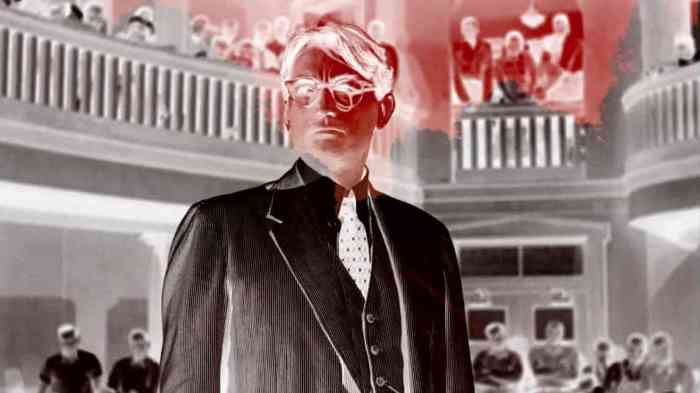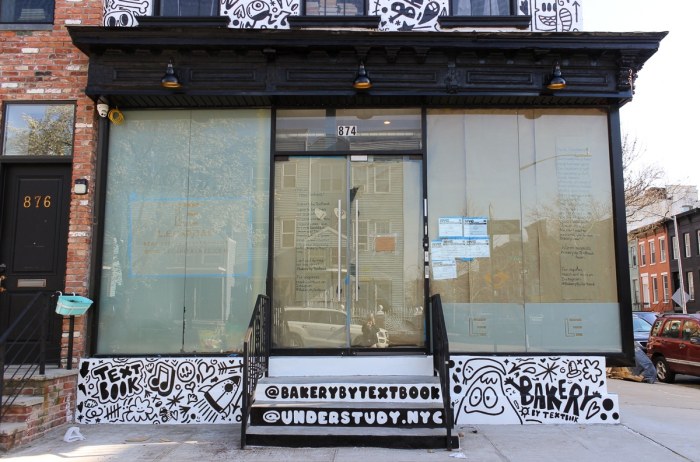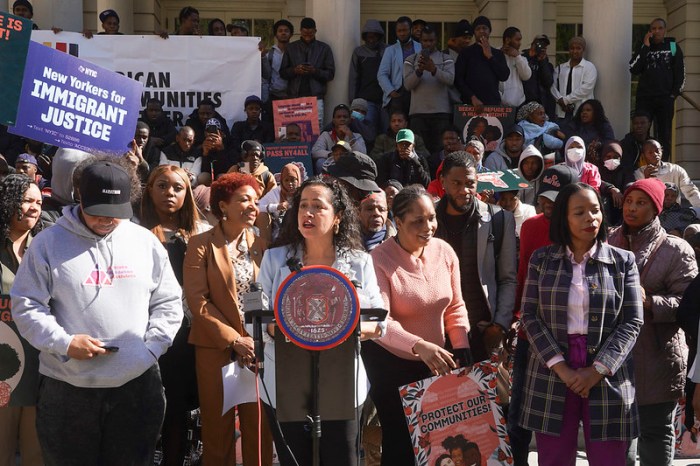The central incident in “Life and Nothing More,” made in Florida by Spanish director Antonio Méndez Esparza, comes 90 minutes in. This film doesn’t exactly depart from narrative, but its reliance on a three-act structure isn’t clear early on thanks to an elliptical style. Méndez also wrote the script. While Santiago Oviedo edited it, the decisions to begin and end each scene on odd beats are probably those of Mendez, too. If he were a drummer, he wouldn’t stick to the rigid pulse of a metronome’s beat and tempo.
His choices also suggest that he doesn’t know everything about the characters, even if he wrote a film about them. Before teenager Andrew (Andrew Bleechington) can answer his school counselor’s question about his role models, “Life and Nothing More’ cuts away.
Single mother Regina (Regina Williams) struggles to get by financially and raise her two children. She’s scared that 14-year-old Andrew will follow his father’s path into jail. But she hates the fact that her life is “work and my kids,” as she tells her boyfriend Robert (Robert Williams, no relation). Andrew starts walking around with a knife, which leads her to kick him out of their apartment. That in turn sets the stage for a dangerous encounter.
“Life and Nothing More” knowingly flirts with certain tropes about African-American life, revealing a more complex underlying reality. Andrew’s father is serving a lengthy jail sentence for attempted assault. Cultural conservatives (not all of them white) frequently blame the problems of African-American youth on the fact that so many of them are raised by single mothers like Regina (usually without examining the reasons why their fathers might be missing from the picture). But Andrew’s father tries hard to remain a positive part of his son’s life, even behind bars, constantly writing letters and doing his best to let Andrew visit him.
Regina’s ability to discipline Andrew is limited by how many hours she must work to take care of them. Given that her mood is constantly prickly — when she and Robert have a long talk in a parking lot, she starts by saying she hates men — she could easily have become a stereotypical Angry Black Woman. The scenes where she goes on interviews for menial jobs she needs to supplement her income as a waitress show that she’s facing a lifetime of hard work for little reward. Her pissiness is put into the context of American poverty and seems quite justified. And her son is s growing up to share it. We’re a long way from the ironically glossy, Pop Art surface of Sean Baker’s “The Florida Project,” even if that film’s characters share the same dead-end existence.
Mendez spent two years making “Life and Nothing More,” half of that time devoted to casting non-professional actors. He cites Italian neo-realist screenwriter and theorist Cesare Zavattini as an influence. But for a film that’s grounded in reality and based in extensive research with poor African-American Floridians, judges, public defenders, and teachers, this isn’t a simple “slice of life.” It gives a damn about life to a degree few American films do these days, but the “slice” is carefully stylized and built.
The film’s storytelling leaps from scene to scene, most in a different setting. Barbu Balasoiu’s cinematography frequently deploys an uncanny, non-naturalistic glow for the interior lighting. It’s not nearly as radical as RaMell Ross’ impressionistic documentary “Hale County This Morning, This Evening,” which also depicts African-Americans in the South, but there are points of contact.
Andrew winds up in a confrontation that would probably go down much differently or not happen at all were he white. But he’s uninterested in acting deferential to defuse the situation, and he only really makes a mistake near its end, even if the results leave him facing serious consequences. Still, it’s the kind of incident that leads to media reports about how black youth are “no angels,” even if they’ve been killed by cops. Mendez directs both his characters and the audience toward that turning point: looking back at the film’s end, it seems inevitable. But he’s a brilliant craftsman who can conceal the work he undertook to move the story in that direction. “Life and Nothing More” both captures an American reality and pulls it apart to make a point, without dishonoring the people whose lives it’s based on.
LIFE AND NOTHING MORE | Directed by Antonio Méndez Opens Oct. 24 | Film Forum, 209 W. Houston St. | filmforum.org
































